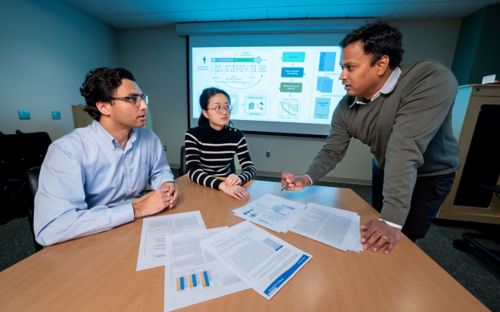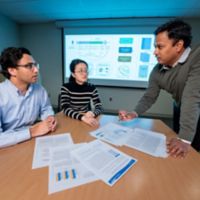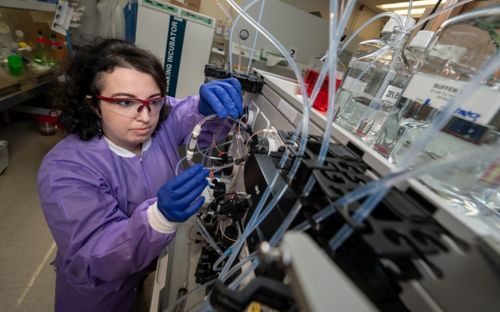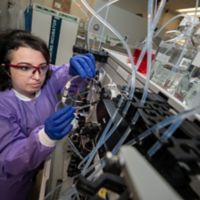Physician partnerships and telemedicine advance treatments and cures

The simple acts of sharing resources help save lives when it comes to treating cancer. And this simple technique has enhanced medical care for more than 100 years.
Telehealth was my connection to St. Jude.
Nearly 20 years ago I finished a pediatric oncology fellowship and went to practice in Amman, Jordan, where I was assigned to the neuro-oncology and ocular oncology services at the King Hussein Cancer Center (KHCC). While I saw many cancer cases during my fellowship, I only saw two children with brain tumors and one with retinoblastoma.
My new assignment left me massively stressed.
But thanks to the cancer center partnership with St. Jude Children’s Research Hospital’s International Outreach Program, I was able to consult with St. Jude specialists in ocular and neuro-oncology as did many others of my colleagues at KHCC on other pediatric cancers. The St. Jude program became a professional lifeline for me and helped ensure I was doing the right thing for my patients.
International outreach goes global
The St. Jude International Outreach Program gave me access to resources I didn’t have in Jordan. Patient survival improved dramatically as did treatment success. The impact was especially impressive in retinoblastoma. For example, when I joined the cancer center in Amman, we saved about 4% of the eyes of retinoblastoma patients. Nearly 40% of patients died of their disease. Working with the International Outreach Program, survival rates increased to 95% and more than 60% of patients’ eyes were saved. Clinicians from KHCC and St. Jude reported the story of this long-term program in July in the journal Opthalmology demonstrating how telemedicine changed the natural history of this disease in Jordan and the region.
At the time, St. Jude had partnerships with other hospitals around the world. This was documented by different studies in Brazil, Egypt and many other places. In 2016, the institution created the Department of Global Pediatric Medicine to advance knowledge of global pediatric oncology and blood disorders. Following a two-year strategic process, St. Jude Global was launched. The new program set the ambitious goal of improved access to care for children with cancer and other life-threatening diseases and influence the care of 60% of children with cancer worldwide.
Now, as a member of the Department of Global Pediatric Medicine, I am on the other end of the communication. My specialties include slow-growing brain tumors called low-grade gliomas, retinoblastoma, global medicine, delayed diagnosis in pediatric central nervous system tumors, pediatric oncology in limited-resource countries and applications of telemedicine in oncology.
Sometimes, travel is essential when working with countries that have limited resources. In specific goals, almost nothing can replace being there in person to help. Telemedicine can be an amazing, persistent, cost-effective tool to promote childhood cancer treatment. It’s even more important when travel is restricted because of local unrest or due to a pandemic.
Telehealth: What is old is new again
The Role of Telehealth in an Evolving Health Care Environment from 2012 identified an 1879 article in Lancet referencing the use of a telephone to reduce unnecessary office visits.
Telehealth has taken different forms since then as technology has improved. The pandemic has triggered a resurgence in the approach.
Telehealth is now used to treat and address myriad health care concerns, but I want to focus on how it has changed oncology. At St. Jude Global, we’re able to consult in partnership with hospitals throughout the world to provide assistance and resources for treatment and diagnosis of cancers.
The benefits of telehealth include:
- Improve survival
- Improve education
- Build local capacity to handle tough cases
- Regular, consistent physician consultation
- Money and time savings
- Safe interactions between clinicians in cases of local unrest or travel restrictions
- Improve access to medical specialists
- Enhance compliance and trust between parents and the local health care team
When I was at the King Hussein Cancer Center and told parents of retinoblastoma patients that an eye needed to be removed to save the child’s life, the parents refused. But, when St. Jude supported the recommendation, parents would agree.
Telemedicine is not about technology, it’s about people connecting. Telemedicine allows me to interact with colleagues and improve care to pediatric cancer patients around the globe. I believe I am a better oncologist and human being as a result.






